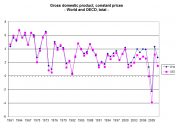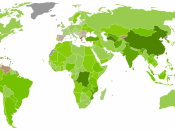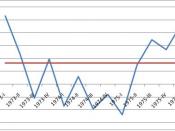The textbook Economics USA: Sixth Edition defines a recession as the subsequent phase during which national output falls and occurs when there have been two consecutive quarters of negative GDP growth. The National Bureau of Economic Research (NBER), however, differs in calling a recession. These experts define a recession as a significant decline in economic activity spread across the economy, lasting more than a few months, normally visible in real GDP, real income, employment, industrial production, and wholesale-retail sales. A recession begins just after the economy reaches a peak of activity and ends as the economy reaches its trough. The NBER's procedure differs from the two-quarter rule in a many ways. Firstly, the bureau considers the depth, as well as, the duration of the decline in economic activity. Secondly, they use a broader group of indicators than just real GDP such as personal income, transfer payments, employment, industrial production, and the volume of sales of the manufacturing and wholesale-retail sectors adjusted for price changes.
Thirdly, they use monthly indicators of real GDP prepared by macroeconomic advisors to arrive at a monthly chronology in order to correctly identify peaks and troughs. The textbook way of calling a recession differs from the NBER's way.
An example as to why the NBER calls recessions in this manner occurred in the year 2001. For on July 31, 2002, the Bureau of Economic Analysis released revised figures for GDP that showed three quarters of negative growth in 2001 (quarters 1, 2 and 3). Prior to this revision the data had shown only quarter 3 as negative. This revision shows why the committee does not rely on the two consecutive quarters of negative growth way, nor relies on GDP data alone, in making its determinations, but rather looks at a broader range of statistics. In...


